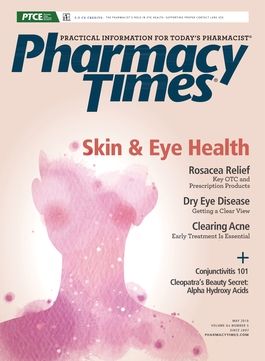Publication
Article
Pharmacy Times
Getting Ready for Vacation: How Brown Bagging Can Bring Clarity
Author(s):
A brown bag consult reviews a patient's medication profile and prepares to counsel her on her new antibiotic, but there are some concerns about the woman's skin and potential risk for skin cancer.
Brown bag consults can be essential educational and safety tools to measure and ensure quality care. By asking patients to bring in all their current medications, including OTC, mail-order, specialty, and herbal products, pharmacists can guarantee appropriate and up-to-date care.
Pharmacists are key providers in the continuum of care, consistently helping to identify potential problems and concerns that may require follow-up with prescribers or a medication therapy management session. It is essential that a pharmacist’s workflow allow for brown bag consults, which can do the following:
- Develop the patient—pharmacist relationship to help create better individualized service, forge patient loyalty and trust, and prevent medical errors
- Provide insight into a patient’s lifestyle and quality of care
- Show how well patients understand their conditions and medications
In recent years, community pharmacists have been more successful in counseling patients about skin cancer prevention. Discussing the link between skin cancer and sun exposure, along with educating patients about how to protect themselves from the harmful effects of the sun, is crucial. Although sun worshipping has lost some of its appeal as skin cancer rates have risen, people still enjoy spending time outdoors and having a little fun in the sun. Identifying patients at risk for sunburn is key. Proactively recommending and providing patients with correct sun-protection products is helpful year-round. Offering general sun safety and skin cancer prevention tips can be done during any counseling session.
THE CASE
SH is a 35-year-old fair-skinned woman who visits the pharmacy monthly. She is at the counter to pick up a new prescription that was just called in for her sinus infection. You also notice SH has a small basket of items with her that she shopped for while waiting for her prescription. The basket is filled mostly with reading material, sunscreen, and travel-sized items. You have observed that SH is very aware of her health and prescription medications. While reviewing her medication profile and preparing to counsel her on her new antibiotic, you have some concerns about SH’s skin. You ask whether she is planning on being in the sun and whether she is going on vacation. SH’s face lights up when you ask, and she tells you that she is going to Mexico. It has been a rough winter spent mostly indoors, and she cannot wait to get outside, relax, soak up some sun, and swim. As you listen and watch your technician check out SH’s prescription and basket items, you notice what may be an inappropriate sun protection factor on the sunscreen that SH is purchasing. Before she jets off, you ask whether she has a few minutes to briefly go over her medications with you. You explain the concept of a brown bag session, and SH hesitates. She thought that services such as brown bags were for elderly patients or individuals taking tons of medications. You smile and tell SH that brown bag sessions can be for any patient who is interested in talking to their pharmacist in detail about any medication or preventive medicine. She agrees to come back to the pharmacy after she stops back home quickly to pick up all her medications.
In preparation for SH’s return, you print out her medication profile:
- Amoxicillin, 875 mg, twice daily for 10 days
- Esomeprazole, 40 mg, once daily
- Lo Loestrin 24 Fe, once daily
- Sertraline, 50 mg, once daily
SH arrives back at the pharmacy ready for her appointment. She empties her medications from her bag, and you notice these additional medications:
- Adult multivitamin with iron, once daily
- OTC calcium carbonate, 1000 mg, once daily
- OTC omeprazole, 20 mg, once daily, unopened
As you review the medications for accuracy, SH continues to tell you how excited she is about her upcoming vacation and what her plans are once she gets to Mexico. After she has finished, you explain to her that you are a bit concerned about her skin in the sun because she has freckles and fair skin. You also mention that some of SH’s medications may make her more sensitive to the sunlight. You quickly review some skin cancer prevention tips. You remind SH to limit midday sun exposure, that her sunscreen should protect her against UV-A and UV-B light, and that she should remember to reapply sunscreen every 2 to 3 hours or after sweating or swimming. You also encourage her to pack a hat, along with some protective clothing. You ask SH whether she has ever seen a dermatologist or self-checked any moles for signs of cancer. She shakes her head no and tells you that she goes to see only her obstetrician-gynecologist and her family practitioner annually, unless there is a problem. SH admits to using tanning beds to get her skin to “glow.” You explain the risks of artificial sunlight and remind her that analyzing freckles and moles for possible abnormalities is important. You stress that SH can always ask you for help in identifying something that may concern her. She is very grateful for the discussion. You explain to SH that she does not need to avoid the sun altogether but that she just needs to take appropriate preventive measures to stay safe in the sun. What are some more sun safety tips to share? What other concerns do you have about SH’s medication profile?
Editor’s note: Case is not based on an actual patient.
Jill Drury, PharmD, is a clinical pharmacy specialist in Chicago, Illinois, and Milwaukee, Wisconsin. She earned her doctor of pharmacy degree from Midwestern University College of Pharmacy.







